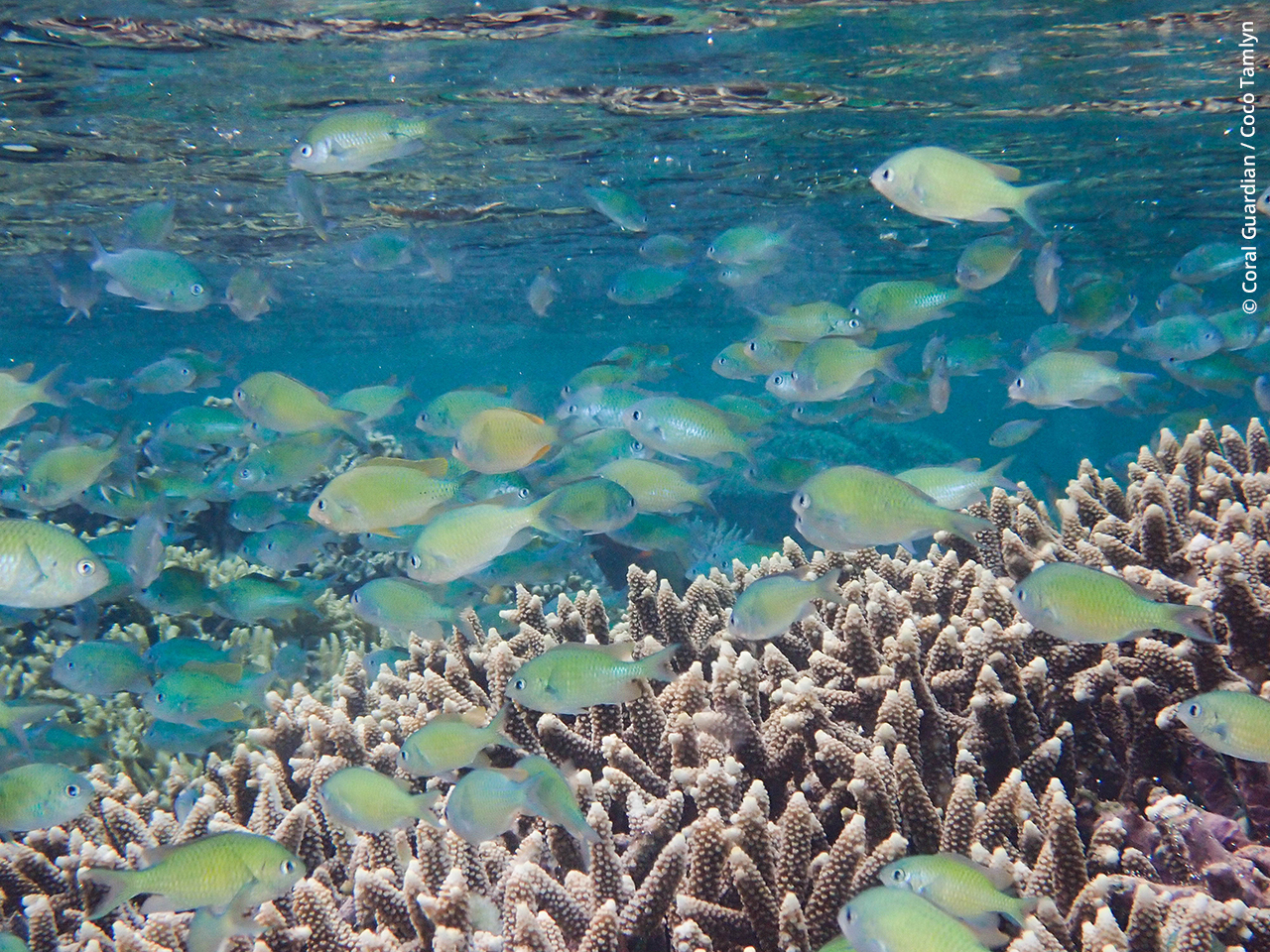Nature in times of COVID-19 : noise pollution and coral reefs

What are the main sources of noise in marine environments?
Noise in marine environments is the result of ecosystem dynamics, which includes both natural and anthropogenic processes (Hildebrand, 2009). Amongst natural sources of noise there are earthquakes, rainfalls, waves, and also the sounds produced by animals. In fact, sound is one of the most efficient ways for organisms to communicate and get information about their environment in marine ecosystems (NOAA, 2020).
On the other hand, anthropogenic sources are related to the engine of vessels and ships for commercial shipping or recreational activities (diving, cruise ships). They also include the use of radars for fishing, deep sea mining amongst others (Slabbekoorn et al, 2010). Noise becomes “pollution” when it is human-generated and when it interferes negatively with wildlife or humans (Jain et al, 2016).
What are the main effects of noise pollution on marine fauna?
Most of marine noise that is derived from human activities is of low-frequency (Hildebrand, 2009). This kind of noise can propagate over long-distances increasing the acoustic masking in ecosystems, which is basically the interference in sound transmission, perception, and it can affect species’ vital processes (Clark et al, 2009).
In fact, it can lead to behavioral transformations for some species (Peng et al, 2015), such as changes in the emitted acoustic messages (Rice et al, 2014). Also, research shows that places with high anthropogenic noise pollution tend to be avoided by species such as green turtles (DeRuiter, 2012) or herrings (Schwartz and Greere, 1984), as well as encourage a lower abundance of cetaceans (Campana et al, 2015).
What about the effects on coral reefs?
As for coral reefs, these are naturally noisy ecosystems. Both invertebrates (f.e. lobsters, hermit crabs) and fish produce sounds related to vital activities such as eating (parrotfishes are messy eaters), mating, defending their territory (University of Rhode Island, 2001), or synchronizing during spawning events (Shärer et al, 2012).
Research made on coral reefs with boat noise shows that the latter can slow the response of some reef fish when facing a predator, leading to higher predation (Simpson et al, 2016). Also, it can lead to a decrease in the recruitment of reef fish and coral larvae, possibly due to a greater difficulty in “listening” and finding a reef to settle in (Holles et al, 2013; Lilis et al, 2018).
So this is the general overlook of noise pollution in marine ecosystems, but how is it linked with the current challenge posed by COVID-19 around the world?
Since the spread of COVID-19, most human activities that usually take place have now stopped for longer than usual, and this has resulted in a quick and drastic change in the way human population uses and occupies the Earth. The outcome is not only that there are less people moving around, but also that pollution linked to the functioning of society has also decreased (Collins, 2020).
The Royal Observatory or Brussels (Belgium) showed a decrease of 1/3 of inland anthropogenic noise due to the COVID-19 lockdown (Gibney, 2020). This has opened a new possibility to record minor seismic noises that were inaudible before.
Regarding maritime activities, the transport sector has drastically dropped since the beginning of the spread of COVID-19 (Berti, 2020). It is the case for crude oil transport, since China is amongst the biggest importers worldwide and its economic restriction has a strong effect. At the same time, the demand for non-essential goods and services has drastically fallen, thus tackling maritime traffic (Berti, 2020). As it happened in land with the decrease in human-related noise, the reduction in maritime transit might have brought with it the diminishment of noise pollution. There are already some research efforts aiming to measure this (Barclay, 2020), but even though it is still quite recent for us, marine wildlife seems to have already noticed these changes.
In a spontaneous wave of citizen science, people around the world have been recording and sharing videos about how marine wildlife has slowly appeared in places where previous records were more rare. It is the case of groups of dolphins that appeared near the beaches of the cities of Cartagena and Santa Marta in Colombian Caribbean, epicenters of tourism and maritime transport, which both have a rare dolphin record usually. Then, in the Mediterranean sea, rorquals and sharks were recorded in the Calanques National Park on French coasts.
Why is this happening?
Well, one hypothesis could be that there are actually more animals around colonizing “human spaces”. A combination of factors might include not only a noise decrease, but also a drop in air pollution and less human occupation. This certainly highlights the fact that environmental conditions and species respond quickly to governments and citizens’ actions, and that these efforts can actually contribute to the recovery of ecosystems.
Certainly the COVID-19 spread is a big challenge for humanity. But it is also a chance to adapt and think about the society and world in which we want to live in after this crisis has passed (or even while it’s happening!), keeping in mind that biodiversity is not a distant subject for humans, but that we are rather part of it. The shifts in the ways we move and live can produce fast changes, both positive and negative, on species and ecosystems. Worldwide, ecosystems and species are dealing with a great amount of stress imposed by human activities, and it is up to humanity as a whole, through our activities and choices, to define the direction of change.

